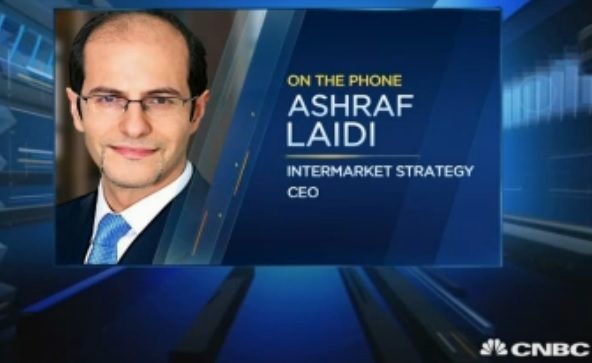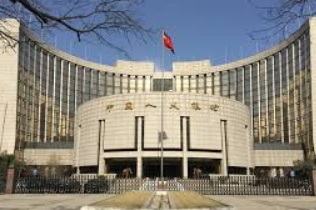Intraday Market Thoughts Archives
Displaying results for week of Jan 01, 2017Volatile President = Volatile Markets
The theme of 2017 so far is volatility and we look at why it will remain elevated for the next four years. On Thursday, the Japanese yen was the top performer while CAD joined USD in the basement. Australian trade balance rounds out the first week of Asia-Pacific trading of the year. 2 new trades were posted on the same pair for Premium members.
A pattern early in the year so far is US dollar selling into the London fix. It's hit in all three trading days to start the year and suggests flows are undermining USD rather than a fundamental rethink. That suggests the selling will eventually stop and the dollar will recover, especially if economic data continues to improve. Recent operations from the PBOC are also weighing on USD as covered in today's Premium Insights.
But oftentimes the supposed fundamental themes in markets are bent to suit the flows and the market psychology shifts. What makes this an especially vulnerable time is that political expectations, not necessarily fundamental data, have been what's driving markets. In a 140-character tweet, Donald Trump can reverse course or upend market thinking in moments. That's the kind of uncertainty that will keep volatility elevated. Add in high expectations from the Fed once again this year and a precarious OPEC cartel and there is no chance it's a quiet year.
In terms of trading, that kind of uncertainty makes any crowded positions vulnerable. When the market psychology is delicate, anything can spark a rush for the exits. We've always kept a close eye on CFTC positioning and we will continue to do so but will expand our gaze in the year ahead to anything that's overly popular or crowded. At the moment, it looks like the swift run-up in the past two months in USD/JPY is exactly that.
Ultimately, growth and fundamentals will drive the big market moves. ADP data was weak Thursday but jobless claims were strong and with the ISM non-manufacturing data. Non-farm payrolls is due Friday and forecast to rise 175K but the market will be focused on average hourly earnings, which are forecast to rise a healthy 2.8% y/y.
Before that, Aussie traders will key in on November trade data at 0030 GMT. The consensus is for a 550m deficit.
| Act | Exp | Prev | GMT |
|---|---|---|---|
| Trade Balance | |||
| -0.55B | -1.54B | Jan 06 0:30 | |
| ADP Employment Change | |||
| 153K | 171K | 215K | Jan 05 13:15 |
| Challenger Job Cuts (y/y) | |||
| 42.4% | -13.0% | Jan 05 12:30 | |
Minutes Highlight Market Split
The split in the FOMC Minutes on Wednesday highlighted the battle that's going on among economic forecasters and in markets. The Canadian dollar was the best performer on the day while the US dollar lagged. Chinese and Japanese PMIs are due later.
هل حان الوقت لشراء الذهب والفضة؟ (فيديو للمشتركين فقط)
The market didn't gain much insight on the path of interest rates from the FOMC Minutes. They largely stuck to the script that Yellen presented in her press conference. The mantra is cautious optimism with high uncertainty.
The minutes laid out how about half the FOMC rejigged its projections and forecasts based on the US election and expectations about coming changes to legislation, taxes and spending. The other half wants to wait and see. Forecasting based on political election promises is a dangerous game but it's a part of trading and the Fed is happy to find a source of optimism after a decade of the New Normal.
The 50/50 split probably also highlights market positioning on the election. Fast money has frontrun what it expects while plenty want to wait and see. It might not be a long wait as VP Pence said the new government will have tax reform legislation in early Q2 and the architecture of something to replace Obamacare around the same time.
In the meantime, there are more concrete signs that the optimism about the new administration has filtered into the real economy. December US vehicle sales were much stronger than expected at 18.26m SAAR compared to the 17.70m consensus. On Thursday, data on ADP and the ISM non-manufacturing index will offer a higher-tier look.
We also note signs of optimism spreading beyond the US. Several well-known prognosticators are picking 2017 as the year Japan finally achieves decent growth. We will get an early look with the 0030 GMT release of the Nikkei services PMI. The prior reading was 51.8.
At 0145 GMT, the Caixin China services PMI is due. The Prior was 53.1. Don't expect a significant market reaction from either but keep a close eye on CNY as it rose the most since July on Wednesday.
A quick note on January seasonals as well. It's one of the strongest months for the US dollar and gold. It's also among the worst months for the euro and one of the worst for the S&P 500 (despite the strong start so far).
| Act | Exp | Prev | GMT |
|---|---|---|---|
| Final Services PMI [F] | |||
| 53.4 | 53.4 | Jan 05 14:45 | |
| ISM Non-Manufacturing PMI | |||
| 56.6 | 57.2 | Jan 05 15:00 | |
| Final PMI Manufacturing [F] | |||
| 52.4 | 51.9 | 51.9 | Jan 04 0:30 |
| PMI | |||
| 53.3 | 53.1 | Jan 05 1:45 | |
| Eurozone Spanish Services PMI | |||
| 55.0 | 54.8 | 55.1 | Jan 04 8:15 |
| Eurozone Final Services PMI [F] | |||
| 53.7 | 53.1 | 53.1 | Jan 04 9:00 |
| Eurozone Retail PMI | |||
| 48.6 | Jan 05 9:10 | ||
| ADP Employment Change | |||
| 171K | 216K | Jan 05 13:15 | |
Growth & Politics: Inseparable?
The line in time between hope becoming reality is a blurry one but it's where US markets find themselves early in 2017. The Australian dollar was the top performer in the first real trading day of the year while the euro lagged. Chinese sentiment data is due later as we continue to keep a close eye on Chinese bonds.

The big market moves since the US election are undoubtedly based on some mixture of hope and expectations that Trump and the new Congress will jumpstart US growth via legislation, regulation and/or spending.
At some point, that hope will need to be replaced by actions and results. Early returns are good. Economic data has been strong and that continued Tuesday with US Nov construction spending up 0.9% compared to the +0.5% consensus. The ISM manufacturing index also rose to 54.7 compared to 53.6 expected in another sign of a pickup.
Hope itself can be self-sustaining to a point. It encourages optimism, confidence and risk taking; three things that are the genesis of economic growth.
One of the quickest ways to undo that progress is political change doesn't come and the hope comes crashing down. That could be because Congress and the White House isn't as united as they may seem. Bets on a dysfunctional US political system for the past 10 years have been well-placed.
Today was the first day of the new Congress and the first priority in the House was watering down the independent ethics watchdog. That's a bizarre priority and the backlash went all the way to the top as Trump tweeted his displeasure. The changes were scrapped.
In a sense, that's heartening but it's also a sign that Trump and Congress aren't on the same page. A big risk in the next four years is that the Republican party isn't as united and focused as markets have led us to believe.
Or maybe – as is usually the case – the shock that hits markets will be one that few expect. That's why we're watching China so closely. The 50 year bond was halted limit down briefly yesterday and, as Ashraf explained earlier, yields are approaching levels that spelled trouble in the past.
Up next we will watch the Westpac consumer sentiment data for China at 0145 GMT. The prior reading was 114.9.
Earlier on CNBC Today
Here is a clip from Ashraf's interview on CNBC earlier today. CAD and AUD were also discussed, ideas covered in the prior IMT. Interview.
2016 Stats, Notes and Themes
The Brexit vote was the predominant market mover in 2016 but it was a year of surprises, twists and turns. As we get ready for a new year, here is a look at the numbers that mattered in 2016 and looking ahead to 2017. Three major currencies outperformed the US dollar in 2016: The New Zealand dollar, Canadian dollar and Japanese yen. The new Premium members video has 5 trading ideas. One of our existing AUD trade is +210 pips in the green.
Gaining 2.96% in 2016, the Canadian dollar was the top performer of the year, narrowly beating out the yen. The loonie didn't get much attention in 2016 but after a dismal start to the year, it rode higher on the rebound in commodities. Still, it was the first CAD gains against USD since 2012 when it began moving away from parity. Broadening the FX universe, BRL, RUB and ZAR were the big winners.
The pound was easily the worst performer, falling 16.26% against the US dollar in its worst year since 2008. It was distantly followed by the euro at -3.18%.
The S&P 500 gained 9.54% -- all of it coming in the final weeks of the year after the election results. Donald Trump's inauguration day is Jan 20 and the rip in markets raises the stakes for his administration. In the bigger picture, the S&P 500 has been in an 8-year bull market, which is one of the longest on record. The cumulative gain since the 2009 bottom is now 235%.
Adjusted for currency moves, the S&P 500 was only the third best performing index. It was bested by Canada's TSX (+21.34%) and Brazil's bovespa (+68.92%).
The performance of metals didn't get the attention they deserved but that's largely because the gains all came in the first half of the year. Since July, gold and silver both lagged but still managed to put up respective 8% and 15% gains in 2016. Given the strength of the dollar, that's an extra-impressive feat.
Three other stories to watch in 2017
The big turn in bonds. A +30 year bull market in bonds is suddenly in jeopardy but it declines won't really hit unless inflation does.Chinese yuan. Donald Trump is headed for a showdown with Beijing. The yuan fell 6.5% in 2016 and whether it's attacking FX policy or trade, the US and China are headed towards a bumpy patch.
OPEC. WTI finished the year up 46% and close to the best levels of the year. OPEC is the big reason for the rally and starting Jan 1 the quotas are in place. How long until the cracks appear?
| Act | Exp | Prev | GMT |
|---|---|---|---|
| AIG Performance of Manufacturing | |||
| 54.2 | Jan 02 22:30 | ||
New Year, New Dilemma
China's PBOC gradually returns to the headlines as it's gripped by the increasingly complex task of defending a weakening currency without sending already rising yields higher. Why is this a dilemma? CNY fell to 5-year lows due to surging capital outflows resulting from Chinese companies, speculators and investors taking money abroad and/or placing it in higher-yielding and returning US dollar-denominated paper. In order to support the yuan, the PBOC depleted its foreign currency reserves by 23% in 2016 as it sold USD, JPY and other FX to buy CNY, hoping to contain the exodus of capital. The most conventional way to do that is by draining liquidity from the bond market so as to make its currency more valuable – yet at the expense of driving already rising bond yields even higher. Less liquidity means rising interest rates.
How far have China's yields gone? The yield on Chinese 10-year govt bonds hit 3.30% last week, reaching its highest since August 2015, the very month China's stock market crashed and shook global equities along with it. Chinese short term bonds also felt the strain as the overnight SHIBOR (the rate charged among Chinese banks to hold liquidity overnight) hit 21-month highs, reflecting the elevated difficulty facing banks to obtain and finance short-term loans. As bond yields rise (also due to rising Chinese CPI and higher global yields), their prices fall, highlighting the risk to China's household investors, who have plunged nearly $4 trillion in yield-chasing instruments. These Wealth Management Products make up about 35% of China's GDP and are … not guaranteed by the banks offering them. Surely, you will be hearing about them from me again as the year progresses.















